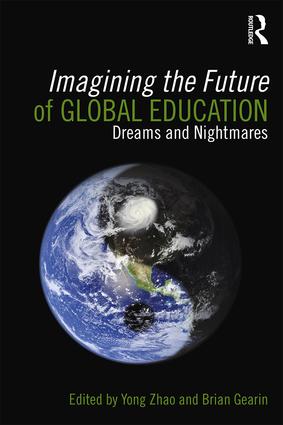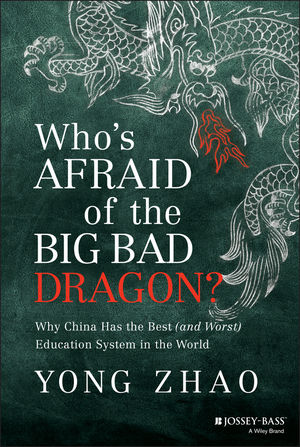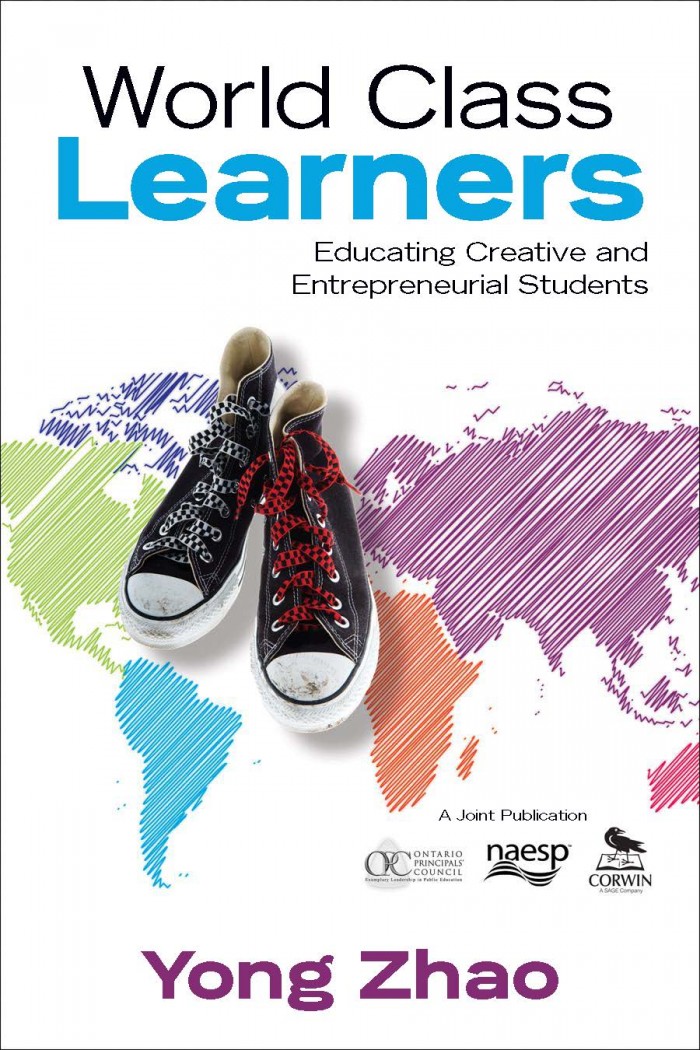Outcome vs. Process: Different Incarnations of Personalization
There are different views of personalized learning. My advocacy for personalization has been occasionally misunderstood as supporting the narrow view of personalized learning driven by big data and learning analytics with technology or online learning in general. Below is an excerpt of a chapter from a book I coauthored with a group of teachers and school leaders: World Class Learners Bundle to be published by Corwin. Hope it helps clarify my take on personalized learning.–Yong
To personalize is to design or produce something to meet individual requirements. In education, personalization is often used in the forms of “personalized learning,” “personalized education,” or “personalized instruction.” The term personalization is often used interchangeably with individualization, and sometimes with customization. The general idea is to enable individual students to have an educational experience that meets their individual needs.
Although it is has long been recognized that individual students have different needs and high-quality education cannot be “one size fits all,” personalization in education has different meanings and realizations in practice because education has many components that can be personalized, individualized, or customized. For example, personalization can happen at the pace of learning by allowing students to learn at their own speed. Personalization can also be employed to enable students to choose when and where they learn. It can also be used in ways that allow students to have a choice of work assignments in the classroom. Furthermore, personalization is a strategy that enables students to demonstrate their learning by creating a product of their own choosing.
Generally speaking, personalization can be put into two categories: process personalization and outcome personalization. Process personalization enables students to enjoy choice in the learning process, whereas outcome personalization allows students to define the end results of their learning. Process personalization is by far the most prominent version in education today because the current education paradigm has a predetermined outcome for all students. That is, no matter how one gets there, we want everyone to get to the same place: mastery of the knowledge and skills prescribed in the authoritative curriculum or standards.
Personalization of the Learning Process
Although the outcome remains the same, the journey to the destination can be personalized to accommodate different needs, abilities, learning styles, and interests of students. Some of the most common aspects of individualization or personalization that have taken place (or should take place) include pace, content, product, learning environments, and assessment.
Personalization of pace: For all sorts of reasons, students come to school with different abilities and thus will acquire the same content at different speeds. To accommodate different abilities in students, schools have been encouraged to allow students to progress at their individual pace. One of the earliest experiments for self-paced learning is programmed instruction advocated by behaviorist psychologists such as B. F. Skinner in the 1960s (Skinner, 1968). Skinner and like-minded individuals relied on technology to enable students to pace their own learning and receive feedback. With the advent of modern computer technologies, individualization of learning pace became more prominent with computer-based learning. Today, the tradition continues in the form of personalized learning with the support of Big Data and learning analytics technology. Personalization of pace can also happen in the classroom by permitting students to work at their own speed. At the school level, one form of personalization is ability grouping or tracking, which puts students into different classes that move at different paces.
Personalization of content: Content can also be personalized to meet individual needs. Although all students in the traditional educational paradigm need to master the same content as prescribed by curriculum standards, they can be exposed to different content that best suits them. For example, following the principles of differentiated instruction (Tomlinson, 2001), students can be given different tasks based on their level of understanding of the content to be covered using Bloom’s Taxonomy. To accommodate different interests and learning styles, students can also choose different genres of content. For instance, different kinds of texts, novels, or short stories can be used to meet the needs of individual students at different reading levels. The media used to present the content can also be individualized. Some may prefer reading, others listening. Some may learn best from audio, others visual, and still others physical manipulation.
Personalization of product: Students often need to produce some sort of product (e.g., papers, exhibits, or exams) to demonstrate their mastery of the intended content. To accommodate different levels and styles of learning, the type of products expected of students can be personalized. Some students may prefer to write a paper, others may choose to compose a song. Some may demonstrate their learning by constructing a product such as a poster, others may create a multimedia interactive book. Some students may choose to take a traditional test, while others may design a video game.
Personalization of the learning environment: Where and how learning occurs can also be individualized. Although the same standard and content is expected of all students in the traditional paradigm, students may choose to learn in different places, from different sources, and with different arrangements. With the wide accessibility to online resources, students do not need to learn the content from the classroom alone nor do they need to learn from the teacher only. They could also learn from field trips and extended trips. Moreover, students could choose to take courses online from other institutions. In terms of how students can learn, they could learn by themselves, or in collaboration with others. In the classroom, a teacher can create different learning environments to support personalized learning. Teachers may use different grouping strategies to accommodate student working styles and preferences or they can create different physical arrangements in the classroom for different learning purposes.
Personalization of Outcome
Personalization of the learning process has tremendous value in improving student learning. It is undoubtedly a major improvement over the traditional one-size-fits-all teaching practices. Thus, personalization has been advocated for decades as an effective approach in the traditional education paradigm to meet the needs of individual students, especially students who have disabilities or are judged to be less ready for certain school tasks. However, it is not enough for cultivating the creative and entrepreneurial talents we need in the new world, as discussed in World Class Learners: Educating Creative and Entrepreneurial Students (Zhao, 2012). A different level of personalization is needed: personalization of learning outcomes.
Personalization of learning outcomes takes personalization to a different level by allowing students to pursue their strengths and interests. It does not accept a prescribed curriculum or set of standards as common to all students, as in the traditional paradigm. Thus, the goal of education is not to fix students’ deficits measured by external standards. Rather, this level of personalization assumes that all talents, skills, and knowledge are of equal value and thus all learning outcomes are valuable. As a result, instead of forcing or luring all students to master the same knowledge and skills, this approach asks for personalized educational experiences that support the development of individual talent. Recent developments in technology also enable students to have access to global educational resources, hence providing opportunities for students to construct a learning environment that meets their diverse needs.
Strength-based personalization: Allowing students to personalize their outcomes is to enhance their strengths. Thus, strength-based personalization requires teachers to not focus on what the students cannot do. Instead, the teacher looks hard at what each student can do and uses that as a starting point to build an individualized pathway for the student. In other words, rather than having students follow a predetermined curriculum, schools follow students and work with them to co-create the curriculum, which is highly individualized. The curriculum emerges as student learning progresses. To do so, schools need to offer a broad range of courses or other learning activities for students to explore their strengths. In this model, the school becomes a museum of learning opportunities. Students can choose to take advantage of any of these opportunities, as museum visitors would any of the exhibits. Teachers become curators of learning opportunities and also “tour guides” for students. They do not impose but can certainly mentor, motivate, and challenge.
Passion-driven personalization: Personalization can also be driven by students’ passions, which can be different from their strengths. That is, what a student may be good at can be different what he or she is passionate about. Students’ interests should be considered as legitimate sources of motivation; what students are passionate about has intrinsic value, although it may or may not coincide with the prescribed curriculum. To support personalization driven by students’ interests and passions, schools need to develop mechanisms to identify students’ interests. Schools must treat these interests seriously once they are identified, and schools must develop courses and learning activities accordingly.
In summary, personalization of learning outcomes is not mutually exclusive with personalization of process. In fact, it requires all of the different strategies of process personalization. But it goes beyond process personalization by extending personalization beyond a predefined curriculum. Curriculum standards may still be valuable as a guide for specific subjects and domains, should students choose to master that subject or domain. However, students are not forced to learn what has been prescribed, particularly at a prescribed time, location, and pace.




























Thanks Yong. A really helpful set of definitions that help clarify what ‘personalisation’ can mean to different people and in different contexts. Personalisation is one of those terms with so many meanings that it will be useful to have different language for describing the various incarnations of personalisation.
One of the best education articles I’ve read. Unless we value freedom in education for our children, why would they truly value any other kind of freedom?
[…] and expert on educational design, wrote a detailed description of personalization in education: “Outcome vs. Process: Different Incarnations of Personalization.” He divides personalization into two broad categories: personalization of process, which allows […]
Feel free to comment:
The views expressed on this site are entirely my own. They do not represent my employer or any other organization/institution. All comments are subject to approval.Archive
03.17.24 Focused: Understanding, Negotiating, and Maximizing Your Influence as a School Leader
02.25.24 What Happened to Global Competence?
08.05.23 Rethinking the time spent at school: Could flexibility improve engagement and performance for students and teachers?
01.17.23 Introduction to Improbable Probabilities: The Unlikely Journey of Yong Zhao
01.05.23 How Not to Kill Creativity?
08.19.22 Preface to Improbable Probabilities: The Unlikely Journey of Yong Zhao
02.05.22 Introduction to New Book: Learning for Uncertainty: Teaching Students How to Thrive in a Rapidly Evolving World
09.25.21 Side effects in education: Taxonomy of educational outcomes
07.13.21 Introduction to My New Book: Learners without Borders
03.09.21 New article: Build back better: Avoid the learning loss trap
02.18.21 New article: The changes we need: Education post COVID-19
09.15.20 Watch Ep4 Creativity in Crisis: How well is creativity understood? A Conversation with Barb Kerr, Haiying Long, Ron Beghetto, & Yong Zhao
08.15.20 Can Creativity be Taught? Ep 3 of Creativity in Crisis on August 28th 3:00-4:00pm Pacific Time
07.13.20 Speak a Different Language: Reimagine the Grammar of Schooling
06.11.20 Assessing Creativity in the Classroom? Recording of Ep2 of Creativity in Crisis
Tag Cloud
Accountability achievement gap CCSSO China/Chinese Commissioner Common Core Standards education Educational Policy Education Reforms national standards New York NGA Singapore standardized testing Standards student performance
WP Cumulus Flash tag cloud by Roy Tanck and Luke Morton requires Flash Player 9 or better.
Silverliningforlearning
Most Commented
Most Viewed
Views expressed on this site are entirely personal. They do not necessarily represent the official positions or views of my employer
Powered by WordPress | Log in | Entries (RSS) | Comments (RSS) | Arthemia theme by Michael Hutagalung